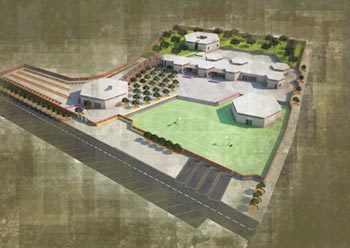

This project deals with the redevelopment of University Square in Volos, bounded by Dimitriados, Ermou, Pavlos Melas and Macedonian streets. Landmark in the area is Matsagos building, now owned by the University of Thessaly.
Admittedly there is a need for a place that combines academic uses, park, city square and places of attitude that will give life back to the track of the center of Volos.
The central idea was to create a green space and a piece of urban square, that are separated by a corridor along the square that connects the street with Demetrias Ermou Street.
Also 2 of the buildings around the square will be rebuilt and will be in use of university. The one on Makedonomahon st. will be the scene of an outdoor theater where the stands will be on the square. Another one on Ermou, will adhere to the complex Matsagos and used as a canteen. Both stone buildings will maintain the outer shell, will be reinforced statically and by changing the internal layout will be of new use to the area.
Finally, just below the stands a refreshment canteen will be created that for the needs of the theater. The square along the corridor will include the element of water as asymbol of the relationship of the city of Volos and the sea.
Supervisor: Adamakis Kostas
Reference Number: 414


This diploma project deals with the hill of Selepitsari in the municipalities of Nikaia and Keratsini, that used to be a quarry, and its transformation to a social, cultural and educational core. Initially, data of the hill is studied and registered and then is analyzed through a walking procedure, for the better and in depth understanding of the needs and the restrictions of the area and the terrain. Therefore the area of study is limited to some part of the hill.
An important element that influences the planning is the view from certain parts of the hill. A visual linking of the view to the Attica basin is attempted. The visual angles that emerge from the correlation of the hill to Attica are transferred to a larger scale on the hill and are turned into paths - tracings. The location of the hill in the Attica basin and the creation of the awareness of its location in space, are achieved through suggested paths which gradually reveal the visual connection with the geographical relief.
Thus, an itinerary network and visual axes are created. Each course, is either a visual axis or an itinerary, is comprised of strips of land which act and behave independently creating hollows and protrusions. The plasticity of the ground finally defines the itineraries and the visual axes. With the extraction or the settlement of the added material, a height difference is created that can be tuned into a sitting or a material change (for example suitable for planting). Moreover material is transferred from the ground level to a higher point in a kind of shed, creating space between the shed and the ground, which can be of functional usage (kiosks, refreshment bars). Three different practices of handling of the ground are followed, which attribute different height to the axel or the itinerary, depending on its significance in the network.
Furthermore, interventions on points are suggested alongside and in contact with the courses. The long wise separation of the ground flows, gives a specific direction and motion and is transformed into a route. In spite of all these the flux changes from longwise into crosswise. "Terraces" are suggested, which take advantage the morphology of the hill. Finally, the project deals with the steep and half-finished and creates observatories as internal cavings on the quarried parts of the hill.
Supervisor: Tzirtzilakis Yorgos
Reference Number: 379


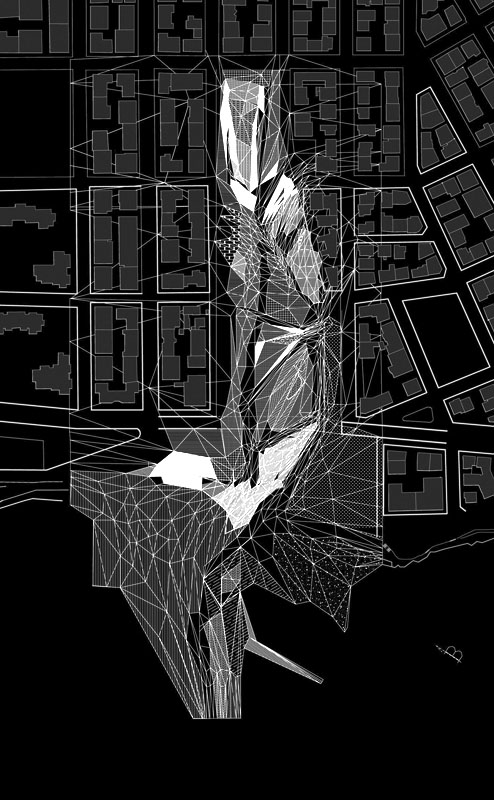

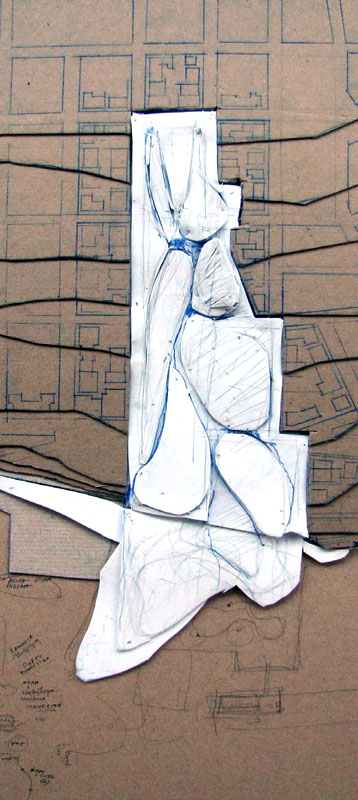



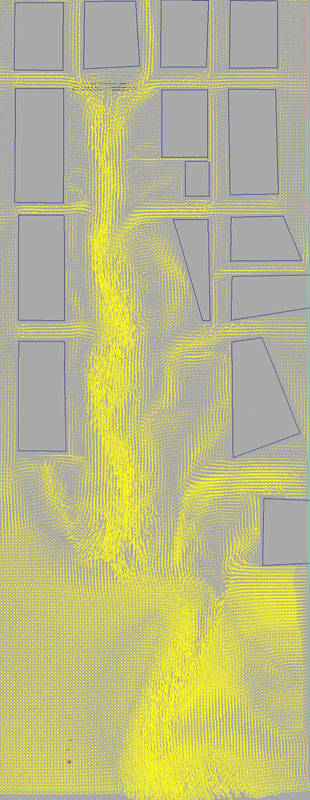



This diploma project deals with the design of an urban park. The study area lies on the eastern coast of Thessaloniki, specifically in the district of Nea Krini in the municipality of Kalamaria. The site refers to a long and narrow unformatted area, vertical to the seafront. The area which is under formation is characterized by a notable elevation compared to the sea and on the verge of it. The location is an urban gap both visually and programmatically. Taking under consideration the needs of the regionand the special features of the intervention area, the design is based on a general intent to develop the seafront as well as the whole site by creating an urban park which will have a local and supralocal character. The topographic reorganisation which is recommended is based mainly on the circulation flows, the distribution and intensities of the different spatial qualities of the existing space and the intent of redefining the limits of green, of the city and of the water element. The dominant feature of our proposal is the creation of two main flows that are treated as cracks in the ground aiming in the direct connection of the urban fabric of the park’s base level with the sea level.
Supervisors: Papadopoulos Spiros, Triantafillidis Giorgos
Reference Number: 398


Lake Karla, also known as Voiviis,had been regarded as one of the most important wetlands in Greece until 1962, when completely drained. Today, a part of the lake has been recreated, becoming a unique example of wetland restoration in the wider Mediterranean region. Prior to desiccation, around lake Karla, had developed a culture of water. The experiential relationship of the fishermen with the lake is described in intense emotion. The new Lake Karla is a haven of rare species of migratory birds and home to rich flora.
The identity of the landscape visitor, of Lake Karla, belongs to a wide range of people who want to experience it. Their aim is to escape from the lifestyle of their ordinary life and find a different situation of living.
The scenery is everywhere in all directions. There, one can contemplate, dream, and experience water by leaving the pattern of his everyday life.
Supervisors: Papadopoulos Lois, Stylidis Iordanis
Reference Number: 400
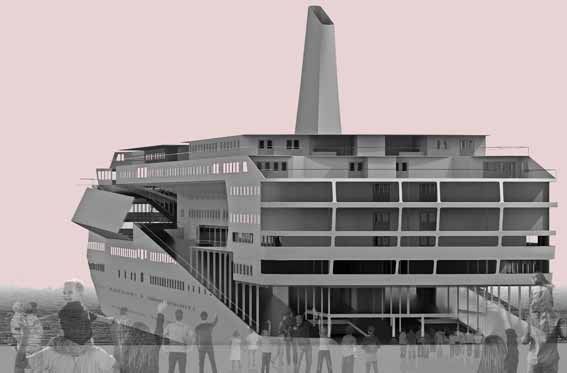

The present diploma thesis explores the relationship between the city and the sea, so that the latter could contribute to the operation of the first. It is proposed an alternative construction which its aim will be to cover exceptional events of the city. Specifically, the proposal concerns the reuse and the reconstruction of an existing cruise ship to a fully equipped swimming center that is moved from a place to place to carry out large-scale events. Finally, an attempt is made to approach the shipbuilding, a specialty eminently active in studying structures moving in water in conjunction with the architectural aspects.
The purpose of creating the floating swimming center is the inability of most cities to host major sport events due to lack of the necessary infrastructure. In order to avoid construction investments for the necessary sports facilities – to be scrapped later (maintenance weakness – low population to support them, etc.) is given the opportunity in every coastal city, regardless of its size and capacity to become a pole of attraction for athletes and sportsmanship for some time, resulting in the promotion. The cruise is rented, travels, binds to ports in order to fulfill these goals.
The interventions were initiated under retention of essential morphological and functional elements of the cruise ship so as not to spoil its character. The major intervention is an open ramp that runs around the boat starting from the stern – an extension of the pier – and ends up on the bow of the vessel, the highest point in the former bridge and the current observation deck. The ramp other than main traffic medium, it is grouping functionally the vessel, separating the swimming center (reception, swimming pools, changing rooms, fitness, bars, retail) from the hotel which hosts the athletes, their support teams and the visitors. Finally, a procedure which takes advantage a feature field of the existing ship is the placements of the grandstands. Specifically, the slot on the side of the vessel where the lifeboats were kept turns into the stands, which open and close with a suitable mechanism. During the trip are kept closed, serving the buoyancy of the cruise ship and while the ship is in port, they open for the conduct of the game.
Supervisors: Paniyiris Costis, Philippitzis Dimitris
Reference Number: 367


The industrial building of BOTRYS was functioning as a winery from 1885 up to 1986. It is located at Sepolia in Athens and its site is between Kifisou highway and the intercity railway.
Today the building and its site are completely abandoned. Its machinery had been sold when it was closed but it has also been looted several times.
During the 1999 earthquake in Athens, the building that was hosting the 9th EPAL nearby was damaged and the municipality of Athens bought the site of BOTRYS. Containers were placed at its southern side and for 13 years they host the students of the 9th EPAL.
The fact that i live near the factory watching its lapse on daily basis as well as the conditions that the students face inside the containers, were the reasons that i decided to held the current thesis. The present thesis deals with the restoration and reuse of the industrial building of BOTRYS in order to host the students of 9th EPAL.
Considering the presence of other schools in the area, it leaded to the construction of additional buildings inside the site like amphitheater for theatrical plays and a gymnasium building since none of the local schools possesses one. Those could attract the students of the local schools to visit the industrial building.
In this way, except the solution that is given for the students of the 9th EPAL, BOTRYS becomes an example on how the rescue of the industrial heritage goes through the educational process.
Supervisor: Adamakis Kostas
Reference Number: 395
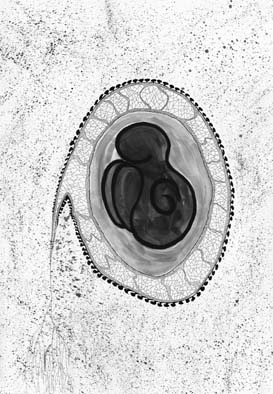

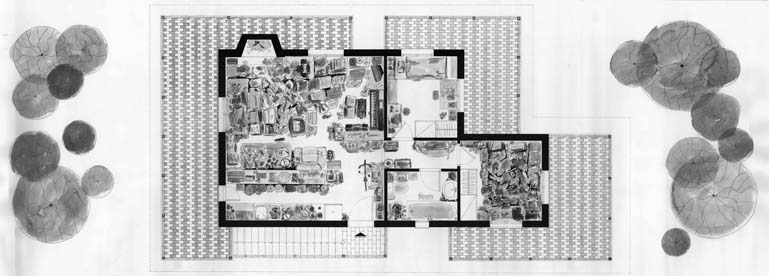



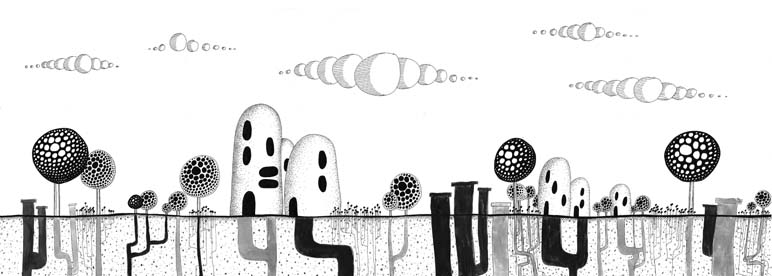





What would your house say about you if it could talk? What kind of relationship do we develop with it? What parameters define and shape the relationship between dweller and dwelling? Do we feel happy at home? How much impact can this have on our psyche?
The present narration deals with the conversation in the interaction between home and inhabitant, especially when this communication is not based on healthy foundations. What does the inhabitant do when he reaches his emotional limits, admitting that he feels pressurized by his home and by the conditions within it? Where does he seek help in this case? Who can restore the ruins in this relationship?
The narration begins with a feeling of dysphoria expressed by Lina, an inhabitant who perceives herself as “homeless” within her home. She lives amongst for walls with whom she can’t converse emotionally. An ephemeral aspect tends to overshadow he capability to bond with her home. She can’t live in the present, nor does she know how to let her home provide her with all those things it was meant to provide.
Her call for help is answered by Orpheus, an Architect who promises to solve her problem with his architectural methods.
Together they will explore the source of what created this emotional gap and they will search for the lost intimacy with the dwelling.
Supervisor: Lykourioti Iris
Reference Number: 406


This project has to do with the creation of a school in a determined area in the city of Volos. The basic parameter of the idea, is the pedagogy. The project takes influences from three innovative schools: the school tin St Dimitrios, creation of T. Zenetos, the primary school in Kanza, of A. Tompazis and the school in Langadas, creation of D. Fatouros. The basic form is the hexagon, because it combines the useful qualities of the circle and the square combined. Each hexagonal unit is a school classroom, and the proportionally bigger volumes form the rest of the school. The goal of the project is the creation of flexible classrooms which will be able to be functional in different types of educational systems, and the form of free outdoor space which can easily be approached and used from the students.
Supervisor: Papadopoulos Lois
Reference Number: 413

